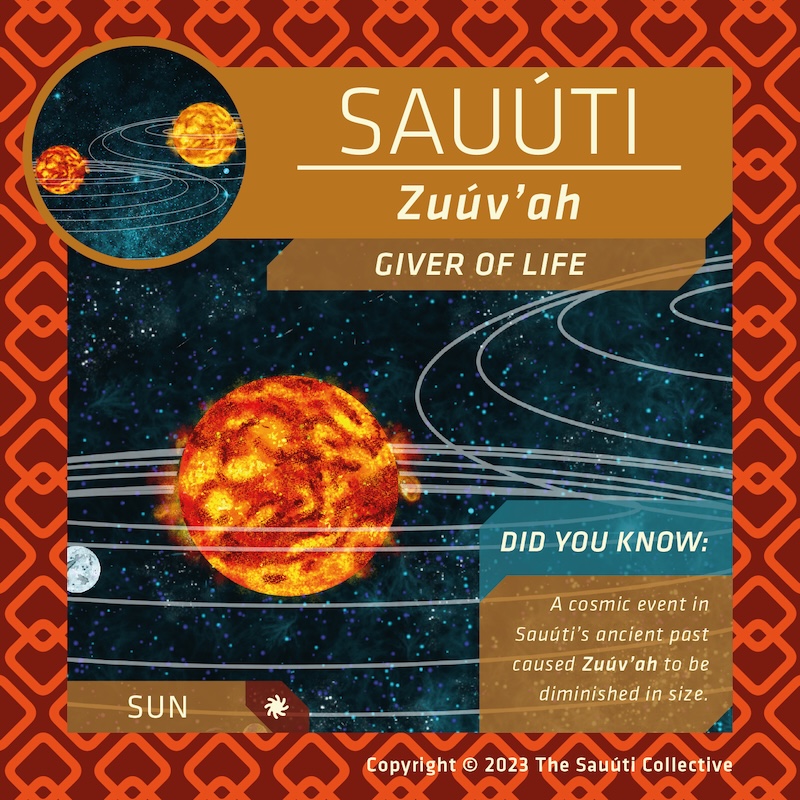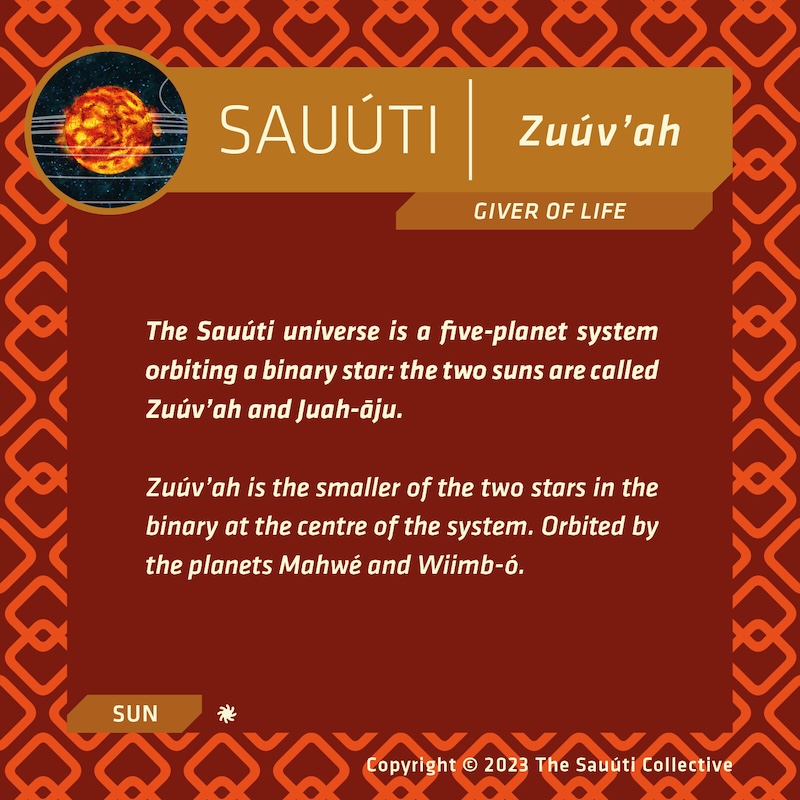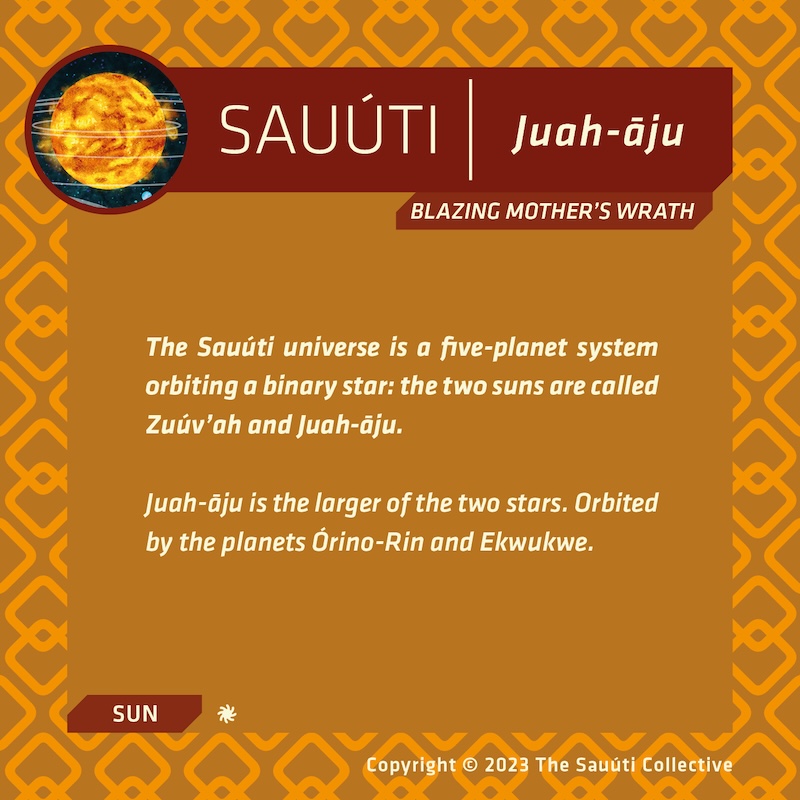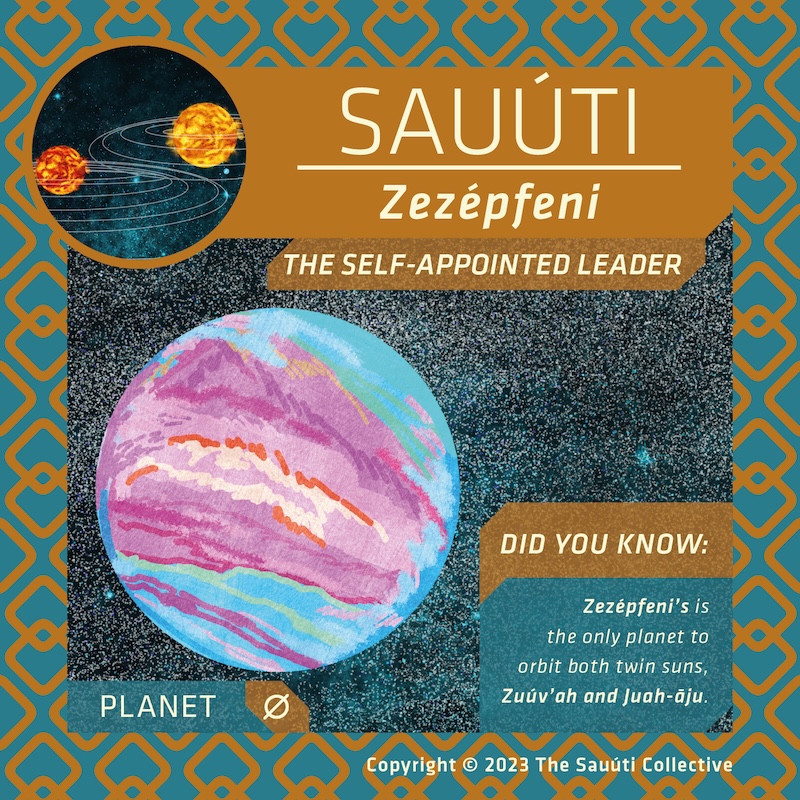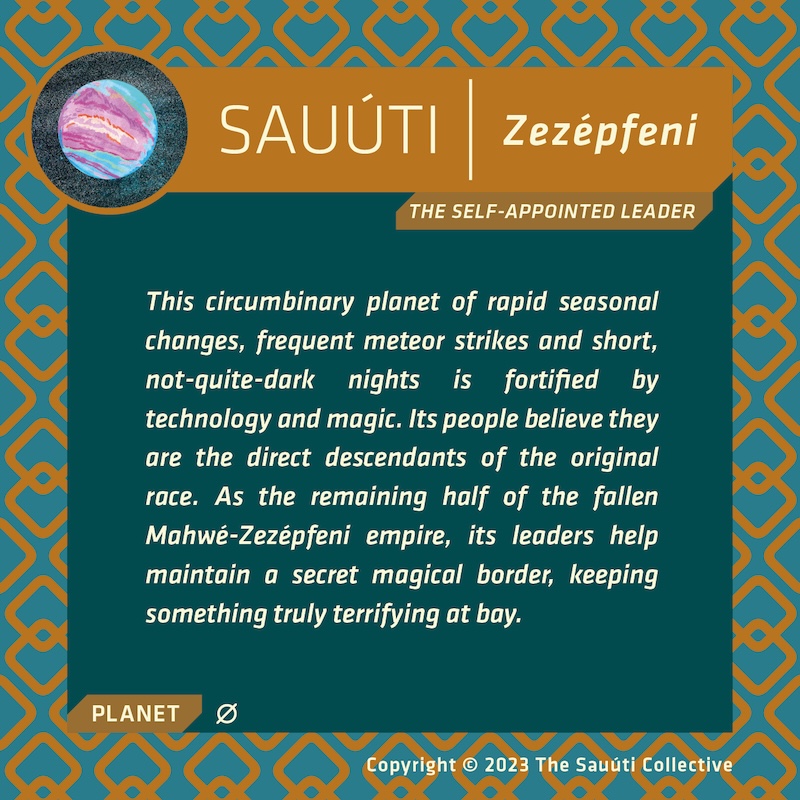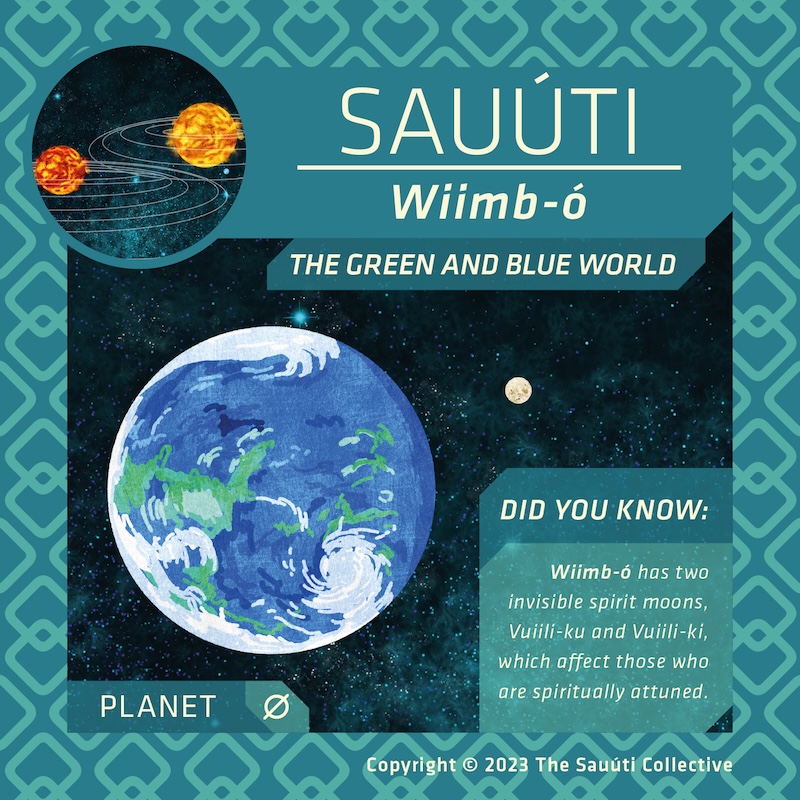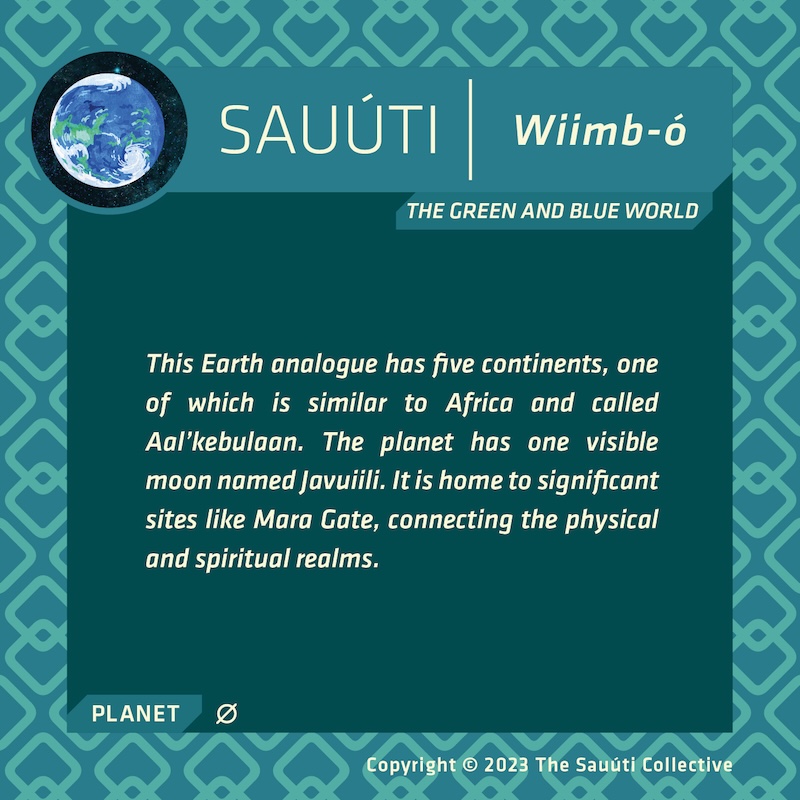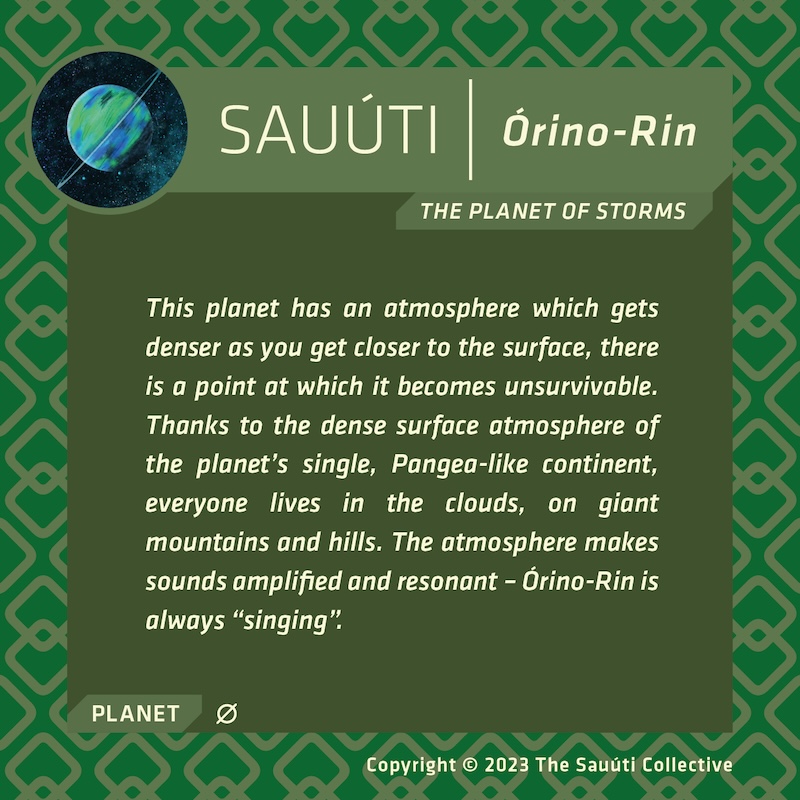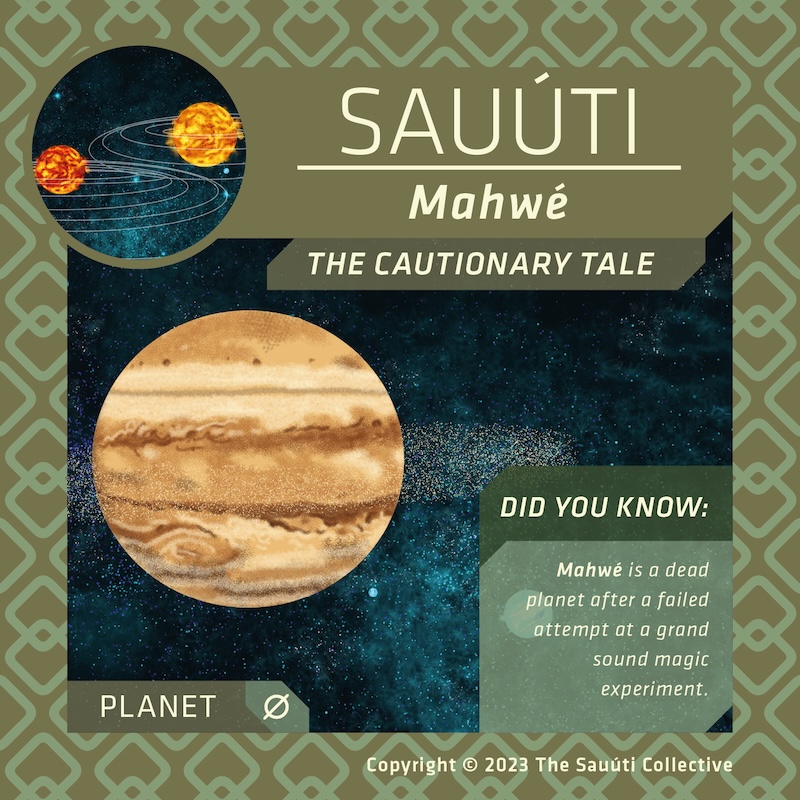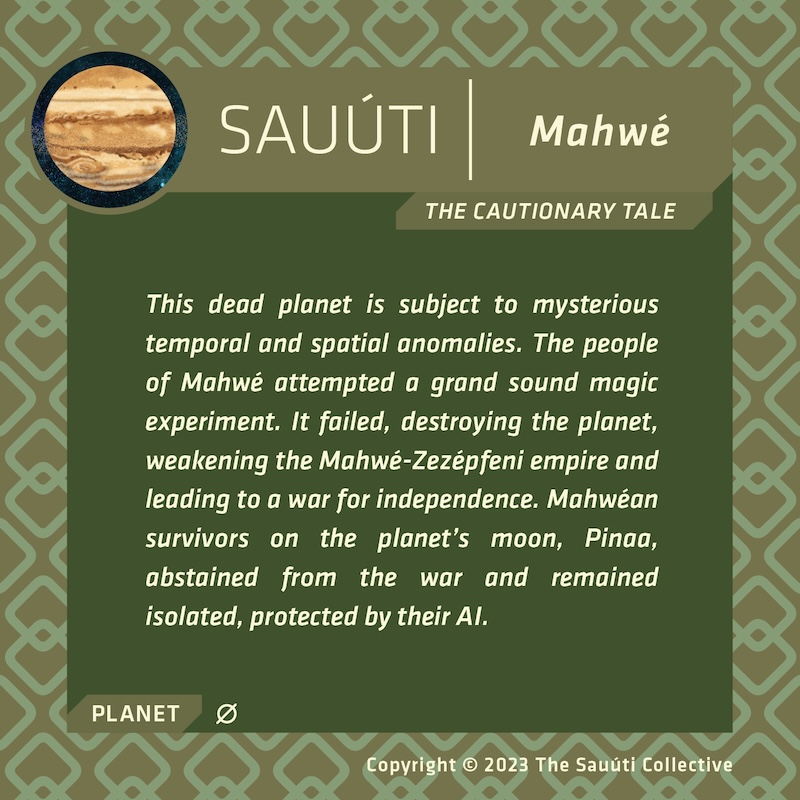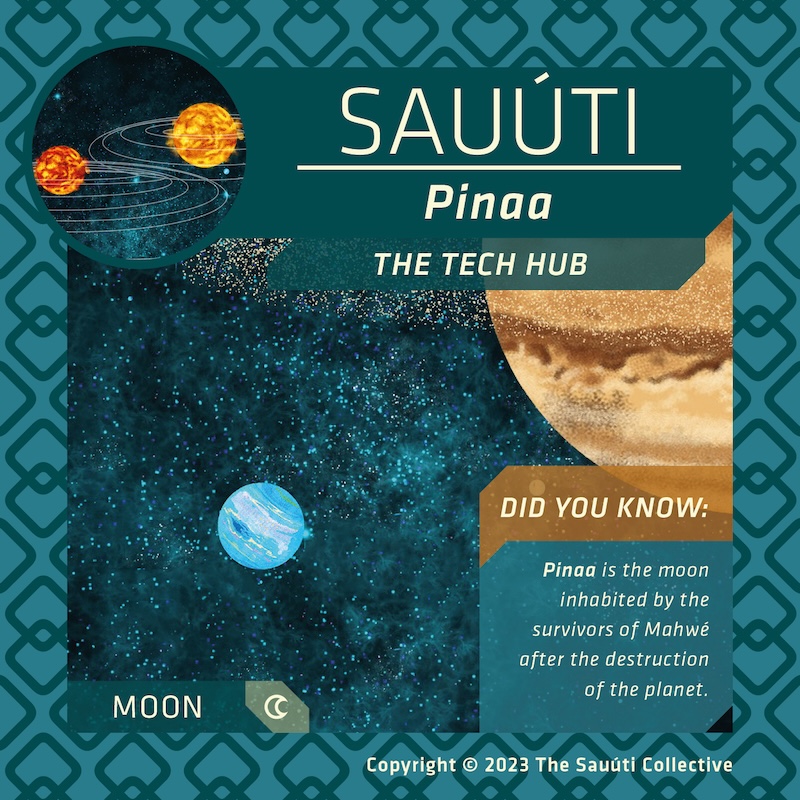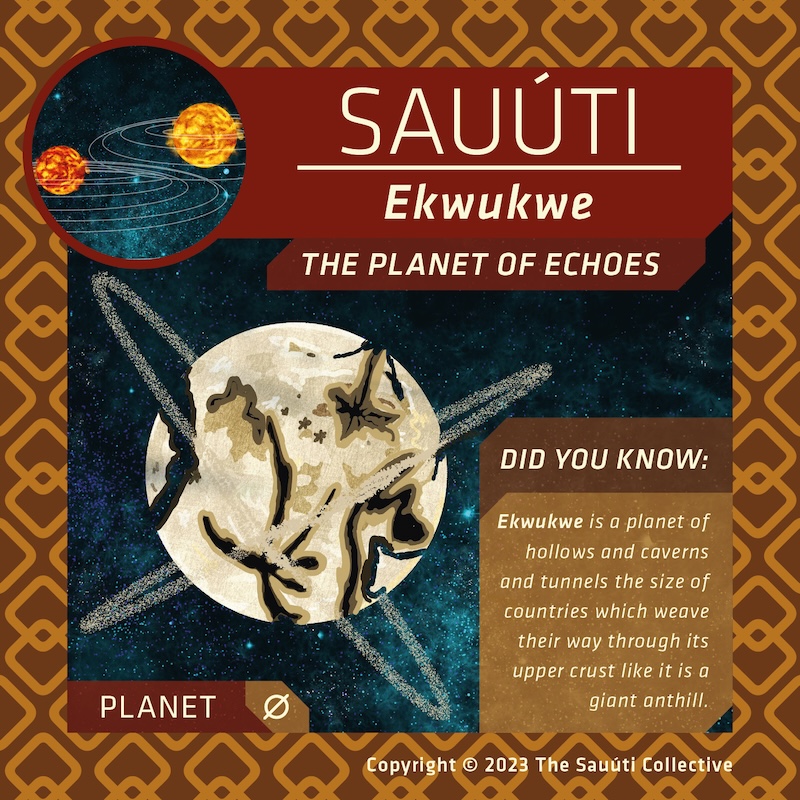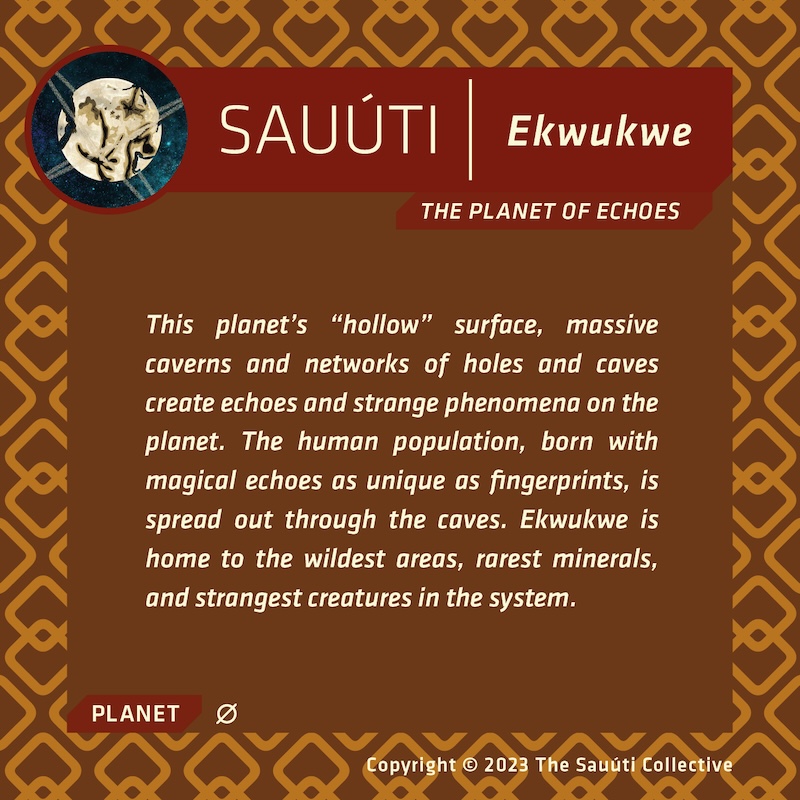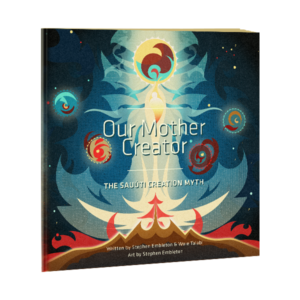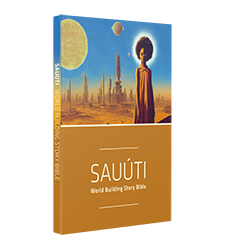The Sauútiverse
Beginning in March 2022, the collective had the unique opportunity to create a new world, a new universe: the Sauútiverse as we call it.
From the ground up, we created the physical origins of the twin sun system, as well as the origin mythology and the various peoples across the five planets.
Overview
The Sauútiverse is an Africa-inspired secondary world with both humanoid and non-humanoid creatures living in a 5-planet, binary star system. All the humanoids have a shared history, having evolved from a much older race that developed on one of the planets – Wiimb-ó – before spreading out.
The basic Theme and Focus of the Sauútiverse is an exploration of the nature of sound as power. Focus is given to sounds, music, language and speaking and it is linked to their shared biologies and cultures and histories. All stories should emphasise how important the sound and the spoken word is, mirroring many traditional African cultural practices. Although there is range and scope for many kinds of stories.
Sound Magic
All technology and magic in this world are primarily driven by sound – soundwaves, spells, music, etc. This is a science-fantasy world with both co-existing and no firm distinction being made. In fact, they frequently occur together. As many interesting blends of the technological and the spiritual/ritualistic as possible are encouraged.
Language
Being sound-driven, there are a variety of unique and interesting languages across planets. There is one root ancient ‘high’ language also called Sauúti, from which all modern ones have evolved, and which is used primarily in magic/reality manipulation and science. There are also unique classes of soundless people and all other varieties. There are also multiple layers of meaning to words and language used in this world – which is context driven and so the same word/sound may be used in different contexts for different objectives e.g., magic or mathematics. The closer a language is to the original high language (i.e., the more root language words it contains), the more power it holds in terms of magic/technology. This is a bone of contention among the different peoples of each planet as they are all trying to acquire more knowledge of this high language from each other while revealing as little as possible.
Myths & Cosmology
Belief in a mother goddess is universal (Read the Sauúti Creation Myth). There is ancestor veneration as well. However, the ‘goddess’ does not explicitly intervene in this world except in special stories/scenarios. The Creation Myth uses a central creator Goddess (also influencing matriarchal/matrilineal social structures within any given society) and the creation of the universe, worlds, nature and humans initiated by a “cosmic” sound” or “word” (i.e., could be interpreted as an uttered sound). The myth further builds on additional gods (who were potentially human/regular who attained godhood through harnessing of the magic sound/words/resonances – and who stand in or are metaphorical representations of the 5 key planets of the world.
The Creation Myth
Every society and culture has mythologies and cosmologies. Creations myths, origin myths, tales of foundation. A story of how they came to be. Myths play a fundamental role in every society. They are sacred narratives. They are stories we tell ourselves about ourselves and our place in the world, sometimes in reference to things in the world that are larger than us. Because they are the stories we share with others to build common bonds of belief, myths can be more important than the simple facts of physical history. Belief systems and mythological frameworks are important in understanding the past, navigating the present and projecting the future of any society.
So, for an imagined shared world like Sauúti, we knew it was important to create an imagined beginning, to have a foundational creation myth, one that plays a key role in how our fictional people in the Sauútiverse saw themselves and which was loosely aligned with their ‘real’ physical history as we had imagined it but larger than that. How would the earliest people in the Sauútiverse have told themselves the stories of the stars unfolding, of how they came to be on their spinning rocks in space, of the two suns blazing in their sky? How would they explain from a rudimentary state with little to no technology, the universe they found themselves in? And how would those stories have mutated over time?
African folklore and beliefs are vast and varied, a multitude of viewpoints and worldviews to take inspiration from and to examine more deeply by abstraction.
We knew we wanted a few things from the start. We wanted a central, god-figure but we also wanted a pantheistic worldview. We wanted an origin myth that was not male-centered in order to establish a more generally matriarchal society. We wanted sound to be a central focus in this world, and so that needed to be reflected in its foundational myth. And so we took inspiration from North African communities who center themselves around a matriarch and goddess. From the Ijaw people and their creator goddess Woyengi. From the Egyptian mythological Nut. Nana Buluku of the Fon who gave birth to the moon spirit Mawu, the sun spirit Lisa. From so many more. And we added more, so much more, to relate to the five planets in the system and their binary star.
Thus, the Sauúti Creation myth. But as you read the stories from the Sauútiverse, take note of contradictions. Myths are always a function of who tells them. Please enjoy, Our Mother, Creator.
LISTEN HERE:
Our Mother Creator – Audio
The Suns and Planets
Find our more about the twin suns and the five planets:
